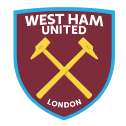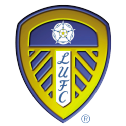Conflict has always been the main recipe of effective storytelling. It’s the necessary tool that draws the audience’s attention through the hero’s myriad struggles, and by the end, it’s because of conflict that we see an ending worthy of our time.
William Faulkner once said that the only thing worth writing about is the human heart in conflict within itself. In football, the only thing worth playing for is the conflict between winning and losing. In the Premier League, arguably the most entertaining league in the world, there are naturally other things at stake, but it seems to me that too many headlines this season are focused on the title race between Arsenal and Manchester City, or the adorned Champions League spots and the battle for them.
Don’t get me wrong: there’s nothing wrong with this spotlight. It is important to celebrate the chase of perfection, because, in the end, victory is the ultimate elixir and, right now, the trophy hunt and European chase are tasty affairs.
But what if I told you there was an even more dramatic story happening slightly lower down the table? A story of conflict that’s so tense, unpredictable and nerve-wracking with not just two or three protagonists, but almost half the league? We’re talking about a full Shakespearean ensemble full of desperate, anxious clubs doing everything in their power to climb out of this well.
Welcome to this season’s relegation battle, which is currently as dramatic as it is unpredictable. This is the best soap opera you’re not watching, and if you’re a neutral, there’s nothing to do but sit back and enjoy. If you’re a supporter, then you have my absolute commiserations. As a lifelong Aston Villa fan, I remember those battles too well — it’s not like they are too far in memory — and they are agonizing. It’s probably the best way to lose weight, to be honest. So believe me, supporters of these clubs I am about to mention, I deeply empathize.
Everyone else? Sit back, relax and let me walk you through this season’s Premier League survival race, the most anticipated, unpredictable telenovela of the season.
Normally, the conversation surrounding the bottom three for relegation focuses on four or even five teams who might fall victim to this plot twist — and, in the past, this excruciatingly agonizing survival dogfight has included some last-day gasping conclusions. In the Premier League’s debut season in 1992-93, for example, on the final day there was a three-way tie for the final relegation spot after Middlesbrough and Nottingham Forest had been confirmed for the drop. Southampton, Oldham Athletic and Crystal Palace were in the trenches running out of hope when, by the end, Oldham defeated the Saints 4-3 and Palace, who lost 3-0 to Arsenal, went down on goal difference.
It was quite the introduction for the Premier League. This season, however, might just set us up for the Premier League’s version of Super Smash Bros., and at this point, I have no idea who is going down. Anyone who says the contrary is straight-up lying.
It’s fair to say that the current table is fairly split from first (Arsenal on 63 points) to 11th (Aston Villa on 34 points). It’s not because of my undying, biased wish for Villa to be in the top half: it’s just pure numbers. After Villa, there is a seven-point gap. It may not sound like the most overwhelming opening, but it is significant due to the fact that the teams below are legitimately aching for points, and their gap differential to the bottom is closer than the one to reach the top half.
Let me break it down for you. Just six points separate 12th (Crystal Palace) and 20th (Bournemouth). Six points. That’s two victories among an ocean of eight teams. No club involved in this scrap has won more than seven matches all season and despite sporadic signs of life from certain clubs, there is no consistency.
One thing is for certain: three teams will drop to the Championship. The question, however, falls on who can overcome the fixtures, match by match. To echo the great Muhammad Ali: “It isn’t the mountains ahead to climb that wear you out — it’s the pebble in your shoe.” These teams have multiple pebbles to deal with.
Let’s take a look at each fighter and what can be expected.
 Crystal Palace: 12th place
Crystal Palace: 12th place
– Situation: 27 points from 25 games
– Goal difference: -11
– Form (most recent game first): L-D-D-D-L
I don’t really know what to make of Palace, who not too long ago looked like an exciting developmental project under Patrick Vieira. They have a plethora of talent, but at times it seems raw and disjointed. Whenever the borderline unplayable Wilfried Zaha doesn’t play, that absence is keenly felt. Aside from that, it’s the fact that they have not won a single game in 2023 nor scored more than one goal in a match this year, and that’s worrying.
I don’t think this month will determine their fate. They have some brutal games between now and April, when their schedule becomes more manageable. With their next three matches against Man City, Brighton and Arsenal, we could see them drop even lower in the table, meaning that the psychological aspect of the squad will be tested. I don’t see them going down, but Vieira has to do everything he can to bring the swagger back and secure my sentiment.
 Wolves: 13th place
Wolves: 13th place
– Situation: 27 points from 26 games
– Goal difference: -16
– Form: W-L-D-L-W
There is definitely enough light at the end of the proverbial tunnel under manager Julen Lopetegui to suggest that Wolverhampton will continue to pick up points. Last weekend, for example, was a very important victory against Tottenham. It may not have been the sexiest, but it did the job.
Here’s the issue — and it’s something Lopetegui is finding out — this squad seems fragmented, and a unit with no cohesion often delivers inconsistent results. The win against Spurs was encouraging, but it came after three straight matches without three points.
In addition, they’re not very dangerous. They didn’t even enter Tottenham’s box in the first half last weekend. Raul Jiménez works very hard, but hasn’t scored a league goal all season. Diego Costa, who was hurt last game and came off in a stretcher, will be out for a while and formations keep changing as a result.
We’ll see what happens in the next few games, but they do have winnable fixtures. They just have to show more consistency, and for god’s sake, a little more urgency in front of goal.
 Nottingham Forest: 14th place
Nottingham Forest: 14th place
– Situation: 26 points from 25 games
– Goal difference: -24
– Form: W-L-D-L-D
That goal differential is alarming — only Bournemouth’s is worse — and that’s where I want to start with this very likable Nottingham Forest. They just simply have to improve defensively, notably away from home. At City Ground, however, is where their story could be determined. Steve Cooper’s side has not lost at home since September. With six games left in front of their supporters, I think they have to continue this trend and probably win every single one of them in order to stay in the league.
The other issue is that eight games from their remaining 13 are against clubs with European ambitions, which means this overwhelmingly large squad needs to be healthy. Forest, the two-time European champion, waited since 1999 to return to the top flight, so I am imagining a fight to the death from the Tricky Trees (sneakily one of my favorite club nicknames).
 Leicester City: 15th place
Leicester City: 15th place
– Situation: 24 points from 25 games
– Goal difference: -7
– Form: W-W-L-L-L
If I didn’t know what to expect from Wolves, then I have no clue about Leicester City.
The Foxes demolished Villa and Tottenham in back-to-back matches a few weeks ago, scoring eight goals in the process, which might make you think Brendan Rodgers had finally figured out the team’s mojo. Manchester United and Arsenal brought them back to earth, however, but this wasn’t that surprising and consensus would have predicted a redemption story against Southampton (after losing to Blackburn Rovers in the FA Cup). Sadly, that did not happen and now the Foxes find themselves stuck in a four-game losing streak across all competitions.
Basically, they need answers, and it seems like the only person to give them is their star player, James Maddison. Without him, they are fragile: Leicester City has only managed a point since the World Cup sans their attacking midfielder. I worry for them, but the flip side is that teams below are in a far worse condition.
There are issues at the club that go beyond what’s happening on the pitch, so that’s an external factor, but regardless, the only thing that matters for Leicester City is survival. Relegation could end up as a disastrous outcome that impacts the club for a long time.
 West Ham United: 16th place
West Ham United: 16th place
– Situation: 23 points from 25 games
– Goal difference: -10
– Form: D-D-L-W-L
Out of all the teams on this list, no higher drop in performance is more evident than at West Ham, who in the past two previous seasons ended seventh and sixth respectively, but now face the all-too-real possibility of relegation.
The Hammers have one win in the past five matches and have only earned two victories in all competitions in 2023. There have been injury issues, but the cold truth is that they’re a shadow of last season’s fearless, creative and resilient unit.
What’s even more complicated is that as I write this, the UEFA Europa Conference League sandwiches inside their schedule so David Moyes’ job — aside from retaining top-flight status — is to prioritize squad health. They need points, and unfortunately, they’re going to have to try to extract them from difficult opponents. That includes fixtures against Arsenal, Liverpool, Manchester United, Newcastle United and Manchester City, which still needs a date after being postponed due to City’s continued role in the FA Cup.
The ultimate answers, however, will be against Southampton, Leeds United and Bournemouth — teams that are even deeper in the hole. Those results are non-negotiable in order to salvage the season.
 Leeds United: 17th place
Leeds United: 17th place
– Situation: 22 points from 25 games
– Goal difference: -11
– Form: D-L-L-W-L
I’ll make this short. April is Leeds United’s biggest opportunity to turn this around. There are home matches against teams dealing with their own issues (Nottingham Forest, Crystal Palace, Leicester City) and the month ends with a trip to Vitality stadium against bottom side Bournemouth. If Javi Gracia can get wins in that period then there is hope, because right now, the only factor keeping them above water is goal differential.
Prior to next month, it’s important for Leeds United to keep things defensively stoic because the amount of goals they score or concede could prove to be vital. Brighton and Arsenal are two of the next three matches so their overzealous mentality on the pitch has to come with balance. Goals are also a problem, as they’ve only scored once in the past five matches (all competitions).
Just keep it simple and creative, Leeds, and you might be OK.
 Everton: 18th place
Everton: 18th place
– Situation: 22 points from 26 games
– Goal difference: -19
– Form: L-W-L-L-D
The euphoric 1-0 victory against Arsenal from last month is a distant memory for Sean Dyche, who is surely awake to the size of his job at Goodison Park. The other home victory against Leeds United has been the only saving grace in the last five matches as Everton has only picked up three points from a possible 15 in that time frame. They squandered away a 2-0 lead against Nottingham Forest last weekend, which in fairness still ended in a 2-2 result, but there’s no time to dwell on the past.
Dyche has to pick up some kind of momentum, and that might begin with something simple: scoring more goals. Dominic Calvert-Lewin‘s absence (he scored 21 times under Carlo Ancelotti) is monumentally felt, and for all the improvements in possession and final-third penetration under Dyche, there isn’t a killer in front of goal to conclude the good work being done. The good news is that DCL nears a return, per Dyche’s news conference, but this weekend might just be too soon.
The upcoming schedule is daunting — their next five matches are against clubs from the top half of the table — but for me, Everton’s success is dependent on Goodison Park. This club needs every single home game as a momentum builder, and it begins this Saturday against Brentford.
 Southampton: 19th place
Southampton: 19th place
– Situation: 21 points from 25 games
– Goal difference: -21
– Form: L-L-W-L-W
The Saints have gone through a lot, not just on the pitch but also from a personality perspective. The eccentric, unpopular and inconsistent Nathan Jones was obviously not going to work as manager, but 39-year-old Rubén Sellés, who understands from his time at Valencia what it takes to be a babysitter while a club hires and fires managers around him, has brought back some stability.
It’s hard, however, to fully reinvigorate a squad and offer consistency, as wins against Chelsea and Leicester City also came with losses to Leeds United and League Two’s Grimsby Town in the FA Cup. The latter is probably a blessing in disguise as Saints really just need to focus on the league.
Sellés believes there is enough to keep this team in the top flight, but their schedule is horrific. Matches against Man United, Brentford, Tottenham, Man City, Arsenal, Newcastle United, Fulham, Brighton and Liverpool are the league’s example of a cruel joke, but the tiny saving grace is that most of them are at St Mary’s.
Once again, as it’s almost the case with every team, the 12th man will serve as a key protagonist for Southampton.
 Bournemouth: 20th place
Bournemouth: 20th place
– Situation: 21 points from 25 games
– Goal difference: -27
– Form: L-D-W-L-L
Every single player at Bournemouth should go watch “Creed 3,” as I feel Michael B. Jordan’s (he’s a minority shareholder in the club) third film can serve as inspiration. That’s because I tell you something: this squad can still get out of this. The bigger question — as they showed against Arsenal — is sustainability and defensive consistency. But I’m not going to lie to you, Cherries. It won’t be easy.
Bournemouth have three points from their last 10 league matches, and have only scored six goals in that period. That has to change, especially for Dominic Solanke, who only has three goals this season. But like Adonis Creed shows us, destiny is there to be written and there have been some signs of life, which have included a draw against Newcastle and a victory against Wolves.
They were also leading Arsenal 2-0 with less than 30 minutes remaining until the Gunners’ incredible comeback, but hopefully Gary O’Neill’s side can use that dramatic loss as fuel. Their opening goal in that game was a remarkable piece of strategy direct from the kick-off, and I feel this is who they need to be in order to avoid the drop. Creative and just like “Donnie” Creed: fearless. Next up, however? The Jonathan Majors of the Premier League: Liverpool, fresh off their 7-0 demolition of Man United. Buckle up.
Credit: Source link